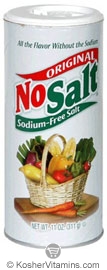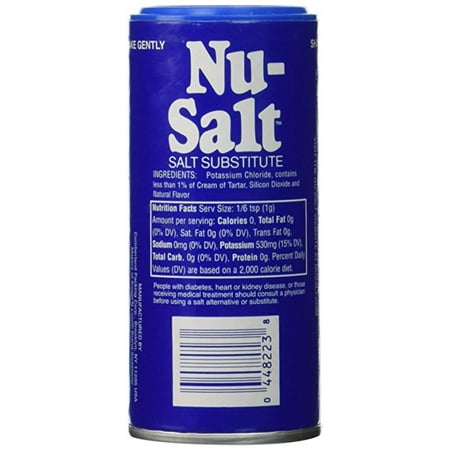Potassium and sodium out of balance
Published: April, 2009
Too little potassium and too much sodium is bad for the heart and general health.
Potassium and sodium. In the pantheon of classic partners, they aren't quite up there with Abbott and Costello, Ginger Rogers and Fred Astaire, and John, George, Paul, and Ringo. They should be. Potassium and sodium together play a huge role in regulating blood pressure, and mounting evidence shows they are intimately involved in bone health.
Research and dietary recommendations tend to focus on one or the other, usually sodium. That's a mistake, since these two elements go hand in hand. And the huge imbalance of this duo in the average American diet requires action on two fronts: getting more potassium and less sodium.
Dynamic duo
Potassium and sodium are essential for life. Molecular pumps that pull potassium into cells and push sodium out create a chemical battery that drives the transmission of signals along nerves and powers the contraction of muscles. Potassium and sodium help the kidneys work properly. They are important for energy production and fluid balance. And researchers are beginning to tease out their roles in bone health.
Thousands of years ago, when humans roamed the earth gathering and hunting, potassium was abundant, while sodium was scarce. The so-called Paleolithic diet delivered about 11,000 milligrams (mg) of potassium a day, much of it from fruits, vegetables, leaves, flowers, roots, and other plant sources, but well under 700 mg of sodium. The scarcity of sodium is reflected in the human body's marvelous ability to hold onto this substance.
Today, sodium is easy to come by, inexpensive, and abundant in our diets. The average American consumes between one and three teaspoons of salt a day, or somewhere between 2,500 and 7,500 mg of sodium, much of it hidden in processed or prepared foods. That's far more than the scant 200 mg a day the body needs. It's a different story for potassium. We average 2,500 mg a day, about half of the 4,700 mg minimum recommended for adults.
In healthy individuals, the kidneys respond to excess sodium by flushing it out in the urine. Unfortunately, this also removes potassium. If potassium levels are low, the body tries to hoard it, which also means hanging onto sodium. Water follows sodium, leading to an increase in the amount of water in the body and the volume of blood in circulation. Blood pressure climbs, and the heart must work harder. Excess sodium blunts the ability of blood vessels to relax and contract with ease, and may also overstimulate the growth of heart tissue. All of these responses are made worse by low potassium intake.
In some people, especially those with high blood pressure, heart failure, or impaired kidney function, the kidneys hang onto sodium no matter what, further complicating the picture.
One way to flush sodium out of the body is by getting more potassium. An interesting report from the Trials of Hypertension Prevention suggests that changing the balance between these two minerals can help the heart and arteries.
In this two-part trial, conducted in the 1980s and 1990s, researchers measured the amounts of sodium and potassium that were excreted over the course of 24 hours by nearly 3,000 volunteers. (The amount excreted is a good stand-in for the amount consumed.) The researchers found that the higher the ratio of sodium to potassium, the greater the chance of having a heart attack or stroke, needing bypass surgery or angioplasty, or dying of cardiovascular disease over 10 to 15 years of follow-up (Archives of Internal Medicine, Jan. 12, 2009).
"Our study suggests that just lowering sodium, or just raising potassium, won't be nearly as effective for fighting hypertension or heart disease as doing both together," says lead researcher Nancy Cook, a biostatistician at Harvard-affiliated Brigham and Women's Hospital.
Food
Amount
Potassium (mg)
Sodium (mg)
Potassium : sodium ratio
Banana, raw
1 medium
422
1
422:1
Black beans, cooked without salt
½ cup
305
1
305:1
Orange
1 medium
232
1
232:1
Orange juice
¾ cup
357
2
178:1
Grapefruit juice
¾ cup
252
2
126:1
Peanuts, dry roasted, no salt
1½ ounces
280
3
93:1
Peanuts, dry roasted, with salt
1½ ounces
280
346
0.8:1
Avocado
½ medium
487
7
69:1
Raisins
½ cup
543
8
68:1
Prune juice
¾ cup
530
8
66:1
Baked potato, plain, with skin
1 medium
926
17
54:1
Fast-food French fries
1 medium order
655
266
2.5:1
Peanut butter, without salt
2 tablespoons
208
5
42:1
Peanut butter, with salt
2 tablespoons
208
147
1.4:1
Brussels sprouts, steamed
½ cup
248
7
35:1
Applesauce (jar), no salt
½ cup
92
3
31:1
Applesauce (jar), with salt
½ cup
78
36
2.2:1
Oatmeal, regular
1 cup
164
9
18:1
Quaker's Instant Oatmeal
1 packet
116
249
0.5:1
Cantaloupe
¼ medium
368
22
17:1
Halibut, baked
3 ounces
490
59
8:1
Spinach, boiled
½ cup
420
63
7:1
Salmon, baked
3 ounces
244
39
6:1
Salmon, canned
3½ ounces
311
399
0.8:1
V8, low-sodium
1 cup
820
140
6:1
V8, regular
1 cup
470
480
1:1
Carrots, raw
½ cup
205
44
5:1
Beet greens
½ cup
655
173
4:1
Milk, 1%
1 cup
366
107
3:1
Cheerios
1 cup
171
186
0.9:1
Marinara sauce, prepared
½ cup
406
527
0.8:1
Pork and beans, canned
1 cup
726
1075
0.7:1
Fast-food cheeseburger
1 regular
444
1176
0.4:1
French bread
1 medium slice
82
416
0.2:1
Cornflakes
1 cup
33
266
0.1:1
Source: USDA National Nutrient Database
Salt and bones
Most of the focus on sodium and potassium centers on their effects on the kidneys, blood vessels, and heart. But these minerals affect every part of the body, including the relentless breakdown and buildup of bone. A diet high in sodium increases the amount of calcium excreted in the urine. This loss is especially prominent when calcium intake is low, as it is for so many Americans. Loss of calcium can contribute to osteoporosis, the age-related weakening of bones.
One way to combat the problem is by taking in more calcium from food or supplements. Getting more potassium, in the range of the recommended 4,700 mg a day, can also help.
To be sure, there is more to bone health than sodium and potassium. Heredity, lack of exercise, hormone levels (low testosterone in men, low estrogen in women), and a dearth of vitamin D and vitamin K can also weaken bones. But it's good to know that a positive change made for your heart is doing good things elsewhere in the body.
Supershots for potassium?
Food companies continue to blur the boundary between food and medicine. An early entry, a margarine-like spread called Benecol, contains sterol esters derived from vegetable oil or wood pulp that help lower cholesterol. One of the latest entries is Promise Supershots for blood pressure. Each three-ounce bottle delivers 350 milligrams (mg) of potassium, with just a hint of sodium (20 mg) and a few calories (45). According to its maker, Unilever, this fruit-based drink is a good source of potassium for controlling blood pressure.
All true. But at $3.99 for a pack of four "shots," it's a pricey way to get just 7% of the daily recommended target for potassium. Ounce for ounce, it costs more than a medium (okay, Grande) latte at Starbucks which, by the way, has more potassium than a Supershot. And you can get more potassium from a banana or some raisins, which also give you fiber and a host of other nutrients.
For most people, more potassium and less sodium is good for health. If you aren't inclined to eat fruit or vegetables, then a daily Supershot might help. But you'll get more from eating potassium-rich foods, for less out of your pocket.
A diet for the ages
Our Stone Age ancestors consumed about 16 times more potassium than sodium. Modern tribes of hunter-gatherers have similarly high ratios. That's a far cry from the average American diet, which has about twice as much sodium as potassium. In a typical example — bacon, eggs, and tomato juice for breakfast; a ham sandwich and a soda for lunch; a bag of tortilla chips for a snack; and fettuccine alfredo, canned green beans, and garlic bread for dinner — there are 1,600 mg of potassium and 4,100 mg of sodium, for a ratio of 0.4 to 1.
One way to prevent or fight high blood pressure and keep the heart healthy is to boost the amount of potassium you get while at the same time reducing your sodium intake. (Note: Check with your doctor before boosting your intake of potassium. Although it's a good strategy for many, it can be harmful to people with kidney disease or heart failure, or those who are taking certain kinds of diuretics, or "water pills.")
The best way to get more potassium and less sodium is by eating more fresh fruits and vegetables, beans, fish, homemade foods, and low-salt versions of prepared foods. You can top the 4,700-milligram mark for potassium and stay under 800 mg of sodium by having regular oatmeal, orange juice, and coffee for breakfast; a peanut butter and jelly sandwich and milk for lunch; baked halibut, a baked potato with the skin, and a spinach salad with half an avocado for dinner; and some peanuts, raisins, a banana, and low-sodium V8 in between. The potassium-to-sodium ratio of this menu is 14 to 1.
Add in some exercise and, though you aren't living like people in the Stone Age, you might have arteries as healthy as they had.
https://www.health.harvard.edu/newsletter_article/Potassium_and_sodium_out_of_balance








